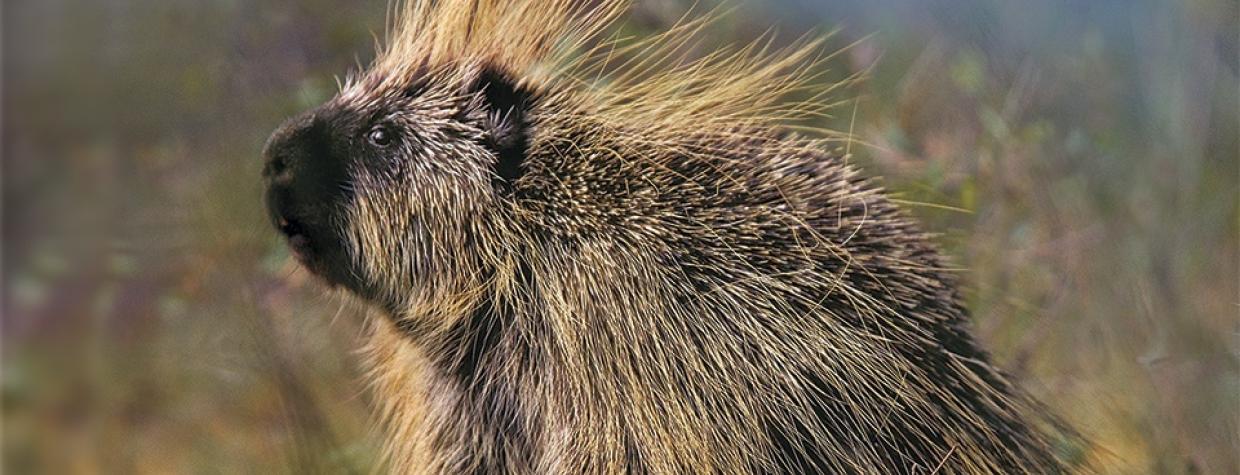Count yourself lucky if you see an Arizona porcupine. "Because they're so thinly distributed, you're not likely to see one anywhere except the Grand Canyon," says Dave Brown, an adjunct professor of biology at Arizona State University.
A century ago, things were different. According to Brown, the unusually high porcupine populations of the early to middle 1900s were likely the result of predator control — specifically, of mountain lions, the porcupine's primary enemy. Today, those practices are no longer in place. "Mountain lions are more common than they used to be," Brown says, adding that the increase has allowed porcupine numbers to return to normal.
Nevertheless, these solitary, nocturnal critters are well equipped to defend themselves. Porcupine translates as "spiny pig," from the Latin porcus, meaning "hog," and spina, meaning "thorn" or "spine." Contrary to its name — which has changed over the years from such variations as portepyn and porkenpick — the porcupine is the second-largest rodent in the United States, next to the beaver. Adults weigh up to 40 pounds and are 2 to 3 feet in length, with a sizeable tail for climbing trees. Porcupines wear a coat of ivory-colored quills and gray hairs that turn charcoal on the back and nose.
The mere sight of a porcupine's 30,000 raised quills — the barbs are 4 inches long — should be enough to make a mountain lion or any other predator reconsider its meal. Porcupines will also chatter their teeth and emit a foul odor. Their quills, however, are a last line of defense. Popular myth aside, they are not shot like arrows; instead, these hollow lances detach on contact and lodge into the attacker.
You're most likely to spot a porcupine munching on grasses in a summer meadow. During the winter, when fresh greenery is scarce, porcupines feed on the new shoots and inner bark of pines, including ponderosas. In doing so, porcupines can stunt tree growth or kill a tree through girdling, by which they strip a ring of bark around the tree's base and sever the flow of nutrients.
In the 1920s, foresters were concerned about the danger porcupines posed to Arizona's ponderosa forests and took measures to reduce populations, including the use of poison in Flagstaff. It wasn't until 1972, when porcupines were no longer regarded as a threat, that they were they protected.
If you happen to see a porcupine, admire from a distance, lest you get more than a view of sharp quills.

